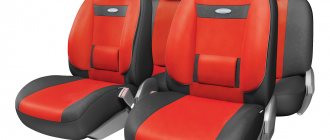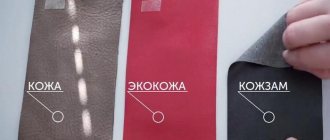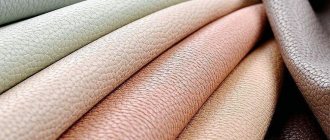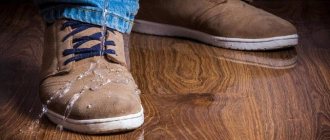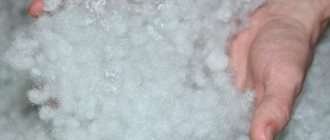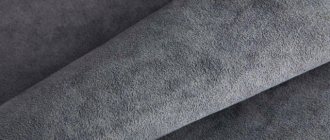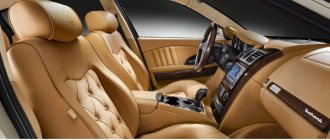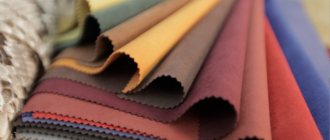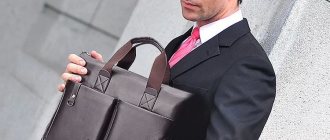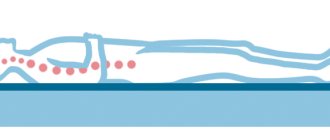Which is better, Alcantara or eco-leather? We are considering options for the car interior
When making feasible interior tuning, many car enthusiasts are forced to figure out which is better, Alcantara or eco-leather.
Maybe most of them would like to reupholster the interior in leather. But, firstly, not everyone can afford it - the material costs exorbitantly and is not accessible to such a wide masses. Secondly, the skin itself cannot be called practical. The interior of the car is not a very comfortable operating place for it: it sometimes sits in the sun for hours, and in cold weather at night it is not heated. As a result, leather seats begin to crack quite quickly - either from drying out or from freezing. And if there is a small child in the family, this skin will not live long at all. A significant category of drivers are not satisfied with fabric covers, primarily because of their very budget-friendly appearance, which sometimes turns into downright wretched. They don't wear any better either, since they wear out quite quickly, and when they get dirty, they can't be rubbed off by hand - just take them off and wash them.
What is better, Alcantara or eco-leather, can only be understood by understanding what kind of materials they are and what qualities the manufacturers initially included in them.
What is meant by the term eco-leather?
For some motorists, this word causes certain mistrust and suspicion in connection with its origin. Especially for those who remember old Zhiguli cars with seats covered in dermantine. They remember the rigidity, sticking, sweating of body parts and cracking of the skin very well, and subconsciously expect the same from the new material.
However, there is a significant difference between old-made leatherette and eco-leather. In the first version, polyvinyl chloride was used in production, in the new version - polyurethane. For leatherette, the bottom lining was made from artificial materials, while for eco-leather, it was made from natural cotton.
From here we have a number of advantages:
- Polyurethane provides the material with the ability to breathe, especially since it has perforation. Thus, eco-leather covers are, so to speak, ventilated; in summer they do not heat up like a frying pan, in winter they do not turn into an icy shell;
- Eco-leather is resistant to both frost and summer heat, which extends its service life not only in comparison with the notorious dermantine, but also with its natural counterpart;
- Caring for seats covered in eco-leather is simple: wipe with a cloth and you have clean chairs. Moreover, this even applies to motor oil, which can be easily removed;
What can you say about Alcantara?
This material almost exactly copies the visual and tactile sensations that suede gives. It is made from polyurethane, polyester and cotton. Motorists rarely choose suede covers: the natural material wears out very quickly and begins to shine.
Alcantara can be used for seat trim:
- it has increased wear resistance: it does not wipe off (and therefore does not shine), is difficult to damage even with cutting objects, does not burn out if accidentally hit by a spark from a cigarette, does not collect dust and successfully resists ordinary machine pollution;
- Alcantara’s thermoregulation is excellent: it’s not hot on seats with covers made of it in summer, not cold in winter;
- Caring for Alcantara is similar to caring for eco-leather: no dry cleaning or washing is needed, all you need to do is wipe the stained area with a damp sponge. True, it is better to remove difficult stains as quickly as possible: if they have time to become embedded, difficulties may arise. However, if after a long period of use the covers cease to satisfy you in terms of cleanliness, they can easily withstand dry cleaning, are not damaged, do not shrink or stretch;
- Thanks to the rough surface, Alcantara covers hold the driver's body well in sharp turns.
Alcantara, developed back in 1972 by the Italians in collaboration with the Japanese, is widely used by many automakers and furniture manufacturers. By the way, our compatriots have less mistrust of this material than eco-leather: it did not have a predecessor that undermined its reputation.
If you think about what is better, Alcantara or eco-leather when applied to covers, then most motorists agree that the ideal cover would be a combination of both, in which the side parts are made of eco-leather, and all the central inserts are made of artificial suede.
Advantages and disadvantages of Alcantara
Alcantara is no less popular among manufacturers of car seat covers. There are a number of objective reasons for this:
- strength - the fabric is almost impossible to damage. It is resistant to abrasion, withstands up to 40,000 Martindale cycles;
- high thermoregulation – in hot weather the material will not create a greenhouse effect, in winter it will retain heat;
- the material is resistant to small fires - cigarette ashes will not damage the upholstery of car seats;
- resistance to dirt – dust does not accumulate on the surface, black Alcantara will remain black without grayish stains;
- pleasant tactile sensations - the material is soft, does not stick to the skin, does not creak, and clothes do not slip over it;
- attractive appearance - the Alcantara surface resembles suede;
- You can reupholster the interior yourself if you use self-adhesive Alcantara.
For all its attractiveness, the material also has shortcomings. The most unpleasant one is that the fabric does not tolerate contact with fat and liquids. The stain from the car cover must be removed immediately, otherwise the interior will need to be dry cleaned. Caring for Alcantara is more difficult than caring for eco-leather. The interior needs to be vacuumed regularly and the covers washed. On protruding surfaces, such as armrests, the fabric wears out faster.
Alcantara or eco-leather – which is better, let’s find out
It's nice to see, and even better to sit in, a car that's covered in leather.
You immediately feel status, self-esteem grows and the feeling that life is a success. But genuine leather is an expensive, albeit prestigious pleasure. Therefore, many motorists choose more affordable substitutes.
Today there are enough leather substitutes, fortunately chemists don’t get paid for their work in vain. But most of all, car owners hear such names as Alcantara and eco-leather.
About Alcantara and eco-leather
Externally, Alcantara resembles suede, and it also feels similar to it. The material has been produced (over 50 years) from three derivatives:
Prestigious car brands such as Mercedes or Lexus have seat upholstery made of this material.
Eco-leather is a relatively new material that is gaining popularity not only among car enthusiasts, but also shoemakers and fashion designers.
Fabric base and polyurethane film are the components of the material. High-quality polyurethane is non-toxic and does not harm the human body. Eco-leather covers look prestigious and status-worthy. Externally, eco-leather is practically no different from natural leather, but it costs several times less.
Cost of covers
Prices for car covers:
- Auto fabric covers: RUB 3,750-6,250*
- Eco-leather covers: 6250-14500 rub.
- Combined covers (with Alcantara) 6300-1500 rub.
Important! There is no fundamental difference in price between the two leading fabrics. Therefore, if a car owner asks the question “Alcantara or leather, which is better?”, one must proceed from the aesthetic characteristics of the cover.
Prices are per set of covers.
Eco-leather Arigon or Alcantara, which is better?
The new materials eco-leather and Alcantara cannot be compared with the first prototypes of leather substitutes. For example, leatherette was made from polyvinyl chloride with an artificial base. And modern eco-leather and Alcantara are materials of half natural origin.
Eco-leather is produced in various versions, but our consumers are most familiar with the Arigon brand. The material is popular and in demand for car seat covers or upholstery and for tuning studios (finishing any parts in a car showroom).
The latter is generally popular to improve the basic properties of a car. Arigon is made only by hand, so the quality of the material is at the highest level. In addition, Arigon has a variety of colors, which makes it possible to choose the ideal option for your car.
Products made from argon are breathable, which significantly increases its performance properties. Arigon is a type of eco-leather that comes in different designs. But if a car owner wants to get a unique and exclusive interior, then the Arigon brand is the best solution.
Advantages and disadvantages of Alcantara
Alcantara is a fairly durable material that is wear-resistant in use and mechanical stress, such as cutting objects or heat from a cigarette.
Alcantara repels dust and dirt. Remarkable ventilation performance allows the material to breathe, and good thermoregulation does not accumulate either heat or cold. The anti-slip effect is especially noticeable during sharp turns.
According to experts, the material has no particular disadvantages, but there are a couple of comments that it is advisable to take into account when choosing Alcantara as seat upholstery:
- Suede fabric requires regular care. Therefore, weekly cleaning of the interior and covers is mandatory.
- Suede is not always the preferred upholstery option for car enthusiasts.
- The cost of Alcantara is much higher than eco-leather, which is not an advantage in choosing the material.
Advantages and disadvantages of arigon
Arigon is eco-leather produced by the brand of the same name. Users who have chosen Arigon as seat upholstery note the following advantages of the material:
- The ventilation rates of eco-leather are not too high, so in the hot season the seats quickly heat up, and in winter they remain cold for a long time.
- The thermal conductivity of ecological leather is comparable to natural leather, so it is pleasant to the touch.
- The material levels itself. This is important as there may be cases where it gets crushed in aggressive mode.
- Eco-leather is “indifferent” to temperature fluctuations, so it does not crack and has a long service life.
- Eco-leather is easy to care for. It is enough to simply wipe it with a sponge. Even a difficult stain is not a problem. The material can be dry cleaned.
- Eco-leather covers do not come apart at the seams and do not lose their shape throughout their entire service life.
- Only a good specialist will be able to see eco-leather, which is difficult to distinguish from natural leather, which gives prestige and status to the car.
- Wide application makes the material in demand for many sectors of light industry.
- The material is hypoallergenic and does not cause negative reactions in humans upon contact.
The disadvantages of the material, such as seat upholstery, are the mandatory impeccability of the size of the covers relative to the seats. If there is insufficient tension or vice versa, the covers will begin to wrinkle and wrinkle or crack.
To make the right choice, you need to know exactly the dimensions of the seats and select the covers individually, excluding averages.
What to wear for the car interior: leather or Alcantara?
Subscribe and read Express Newspaper in:
It's no secret that a car with a leather interior looks much more prestigious than the same one, but with ordinary fabric seats. Recently, another material for interior upholstery, Alcantara, has become increasingly popular. Both materials are prestigious and highly valued, so the question arises, “Which is better?” It is difficult to answer this, since the requirements for the interior of each car owner are different. Let everyone decide for themselves what to prefer.
Leather is known for its high environmental friendliness. It is pleasant to the touch and allows air to pass through well. And special automotive leather is also distinguished by its durability, moisture resistance and strength. It does not fade in the sun and remains elastic at any time of the year. We can say that reupholstering the interior with leather is a classic option. With its help you can transform the inside of your car beyond recognition. And an experienced designer can offer several rather bold upholstery options that combine two or more leather colors.
But if most motorists know about the advantages of a leather interior, not everyone is familiar with such material as Alcantara. Essentially, it is a man-made fabric that resembles suede. It is much stronger than leather and even more attractive. Its main advantages are fire resistance and extreme resistance to mechanical damage. In order to cut this material, you need to try very hard.
Car enthusiasts often complain that seat upholstery absorbs odors. But reupholstering the car interior with Alcantara will allow you to forget about this problem, since this material does not absorb odors. He doesn't even care about sudden changes in temperature. Despite the fact that Alcantara is an artificial fabric, it feels as pleasant to the touch as natural suede: warm and soft. Due to the anti-reflective effect, this material will always look elegant, like natural.
As for the design of the car interior, when using Alcantara, the modeling possibilities are even higher than when making it from leather. This is due to the large number of color shades of faux suede, which is not possible with leather dyeing. And the strength of Alcantara allows the use of finishing technologies such as embroidery, inlay and perforation (holes).
It is worth noting that reupholstering the car interior with artificial suede is very beneficial for both customers and performers. The first ones will receive a car interior that will serve them for several decades. And for performers, upholstery with Alcantara implies waste-free production, since, unlike natural leather, this material does not have defects that need to be eliminated or cut out.
Alcantara “breathes”, like leather, and does not require much care. It is cool in summer and warm in winter. However, this material is often much more expensive than leather. And yet, reupholstering the interior with Alcantara allows you to save money, since replacement of the material will not be required soon.
Whatever material you choose, you should remember that it is better to complete the interior decoration in a comprehensive manner. It is unlikely that leather seats or those covered with Alcantara will look harmonious in combination with the old “factory” ceiling. It is also worth thinking about the trim of the steering wheel, doors and dashboard.
as an advertisement
What is Alcantara?
The fabric was created in the 70s by Japanese scientist Miyoshi Okamoto, who worked for a large chemical company. Synthetic nonwoven material has quickly become popular in Europe and Asia due to its performance and aesthetic properties.
Ultramicrofiber looks presentable, even luxurious. Alcantara has a soft and velvety surface that is pleasant to touch. Externally, the material resembles suede. That is why it is used for upholstery of various car interiors: it is used for reupholstering the ceiling and seats, for decorating individual parts and interior elements. Manufacturers use non-woven fabric to produce high-quality and comfortable clothing, furnishings and furniture for commercial, retail, public, residential and other premises. The material is purchased for upholstery of luxury yacht interiors.
The important operational advantages of the material can confidently include the following characteristics:
- The fabric stands out for its lightness and visual beauty. The material consists of 32% polyurethane (characterized by strength, decent resistance to weathering, high loads, chopping blows) and 68% polyester (characterized by waterproofness, durability, wear resistance).
- Alcantara is a safe, environmentally friendly, breathable fabric that does not cause allergic reactions. As a result, the material is widely used in industry, production of products, furniture, and clothing.
- Alcantara perfectly retains its shape throughout its entire service life. At the same time, the fabric is easily cleaned from various contaminants, including spilled drinks, paint, varnish, fats, sweets, and cosmetics.
What is eco leather?
Eco-leather is a high-tech and high-quality material that is produced using special technology. At the same time, no PVC is used during creation. Eco-leather, as a rule, consists of two main layers. The outer surface is made of polyurethane: a durable, reliable, frost-resistant material that can withstand temperatures reaching -35°C. Polyurethane with micropores is applied to polyester or cotton fabric. The amount of polyurethane used to cover the base depends on the quality of the product.
Eco-leather is used to produce furniture, bags and accessories for men and women. It is used for sewing clothes and for making shoes, for creating car seat covers and other products.
Main operational advantages of eco-leather:
- The material is hypoallergenic, so it can be used for upholstery of almost any vehicle.
- Eco-leather products are not afraid of temperature changes, so during use they do not crack due to cold or heat.
- The material retains its aesthetic appearance for many years. It is distinguished by its resistance to various chemical compounds.
- The products are easy to clean from various contaminants. For example, to clean surfaces, use a damp sponge soaked in warm water or soapy water.
- Eco-leather “breathes”: natural air exchange occurs between the environment and the modern material. At the same time, it does not allow drops of water to pass through.
- Eco-leather is a safe product because it contains no harmful components.
- The material is pleasant to touch.
- Eco-leather looks attractive. In appearance it strongly resembles natural leather. As practice shows, only a specialist can identify the differences.
- Car seat covers retain their shape for many years.
Which material to choose: eco-leather or Alcantara?
As we can see, eco-leather and Alcantara are characterized by numerous advantages. That is why many are interested in what material is best to purchase for interior trim.
As a rule, the steering wheel in sports cars and SUVs is decorated with Alcantara. After all, the material has a rough surface and does not slip.
Covers made from eco-leather are not very well ventilated, although they allow air to pass through. In hot weather they heat up quickly, and in winter an unpleasant coolness emanates from their surface. But capes made of Alcantara are characterized by excellent thermoregulation and are ventilated. As practice shows, real Alcantara is more expensive than eco-leather.
Ultramicrofiber stands out for its unique wear resistance. The fabric can withstand various mechanical impacts and impacts from sharp objects. When exposed to sunlight, the surface does not crack or fade, and does not smolder due to cigarette ash. As a rule, the cape retains its brightness and beauty throughout its entire service life.
Eco-leather and Alcantara have no global disadvantages. If your budget allows you to decorate the interior using ultramicrofiber, then, of course, it is better to cover the interior with this fabric. At the same time, Alcantara has more than 50 shades. It goes well with other materials used to decorate the car, including wood, metal, and genuine leather. It is only important to use real ultramicrofiber. After all, on the modern market there are a lot of unscrupulous sellers who disguise fakes as real fabric.
Thanks to new technologies, substitutes for this material have appeared that are endowed with useful qualities, but are cheaper in price. Among them, products made from eco-leather and Alcantara have gained popularity. This is a budget alternative to natural products. Each of the accessories has pros and cons. Before purchasing, please read the product specifications.
Features of eco-leather cases: advantages and disadvantages
They will reliably protect the seat trim and radically update the car showroom. This artificial material has been produced since 1963 and is produced by combining a fabric base and a polyurethane film on top. Automotive companies actively use eco-leather in the production of new cars. They also sew covers that fit the range of vehicles already produced. Eco-leather is valued for its qualities that are similar in characteristics to natural leather.
Eco-leather car covers have the following advantages:
- beautiful design - their structure is similar to genuine leather, but their price is much lower;
- hypoallergenic - they do not contain harmful toxic substances, so both the driver and passengers will be safe;
- high mechanical strength, wear resistance, with proper use they will last a long time;
- the ability to pass air through micropores, they do not create a greenhouse effect;
- comfort for the body - in cold weather such seats keep you warm, and in summer it is not hot to sit on them;
- The material is easy to care for, no special products are needed for this, you can simply wipe the surface with a damp sponge;
- Accessories selected according to size retain their shape for a long time, do not form bulges or waves, and follow the contour of the seat.
Many vehicle owners prefer car covers made from eco-leather of the Arigon brand from.
They are not afraid of temperature changes, are especially durable, and do not come apart at the seams. They are made by hand on a cotton basis. This is an environmentally friendly material, durable and lightweight. Arigon covers are produced for different brands of cars, and a wide range of colors is offered. It is better to order accessories from branded retail outlets that provide a guarantee for their products. It pays to buy products from reputable manufacturers who have received positive customer reviews.
Car covers made of eco-leather or Alcantara – what to choose
July 3, 2019
Thanks to new technologies, substitutes for this material have appeared that are endowed with useful qualities, but are cheaper in price. Among them, products made from eco-leather and Alcantara have gained popularity. This is a budget alternative to natural products. Each of the accessories has pros and cons. Before purchasing, please read the product specifications.
Features of eco-leather cases: advantages and disadvantages
They will reliably protect the seat trim and radically update the car showroom. This artificial material has been produced since 1963 and is produced by combining a fabric base and a polyurethane film on top.
Automotive companies actively use eco-leather in the production of new cars. They also sew covers that fit the range of vehicles already produced.
Eco-leather is valued for its qualities that are similar in characteristics to natural leather.
Eco-leather car covers have the following advantages:
- beautiful design - their structure is similar to genuine leather, but their price is much lower;
- hypoallergenic - they do not contain harmful toxic substances, so both the driver and passengers will be safe;
- high mechanical strength, wear resistance, with proper use they will last a long time;
- the ability to pass air through micropores, they do not create a greenhouse effect;
- comfort for the body - in cold weather such seats keep you warm, and in summer it is not hot to sit on them;
- The material is easy to care for, no special products are needed for this, you can simply wipe the surface with a damp sponge;
- Accessories selected according to size retain their shape for a long time, do not form bulges or waves, and follow the contour of the seat.
It is better to order accessories from branded retail outlets that provide a guarantee for their products. It pays to buy products from reputable manufacturers who have received positive customer reviews.
Alcantara: pros and cons
Alcantara looks and feels similar to suede. It has fluffy pile on top, is soft, velvety, and has a beautiful shine. This material has been in use for more than 50 years; it is made from three components: cotton, polyester and polyurethane. Many manufacturers use this material for interior upholstery. Its performance characteristics are superior to natural suede.
Alcantara has a number of advantages:
- durability, high degree of wear resistance, not afraid of mechanical damage and sharp objects, will not be damaged by animal claws;
- high ventilation rates - the material breathes, has excellent thermoregulation - it does not accumulate cold and heat, it will be comfortable on such seats in winter and summer;
- has an anti-slip effect even during sharp turns - this is facilitated by the rough surface, the material does not stick to human skin and does not creak;
- does not shine and does not rub off, does not form pellets, is endowed with thermal stability - it will not be damaged by sparks or ash from cigarettes;
- repels dirt and dust, does not absorb engine oils, does not fade in the sun, you can choose any color scheme to match the car interior;
- The upholstery is easy to care for - you can simply wipe it with a damp cloth and use standard cleaning products.
The price of artificial material is cheaper than natural suede. Accessories do not have to be changed for a long time; they retain their original appearance for a long period. Thanks to the use of such covers, comfortable conditions will be created for the driver and passengers inside the car.
Alcantara: pros and cons
Alcantara looks and feels similar to suede. It has fluffy pile on top, is soft, velvety, and has a beautiful shine. This material has been in use for more than 50 years; it is made from three components: cotton, polyester and polyurethane. Many manufacturers use this material for interior upholstery. Its performance characteristics are superior to natural suede.
Alcantara has a number of advantages:
- durability, high degree of wear resistance, not afraid of mechanical damage and sharp objects, will not be damaged by animal claws;
- high ventilation rates - the material breathes, has excellent thermoregulation - it does not accumulate cold and heat, it will be comfortable on such seats in winter and summer;
- has an anti-slip effect even during sharp turns - this is facilitated by the rough surface, the material does not stick to human skin and does not creak;
- does not shine and does not rub off, does not form pellets, is endowed with thermal stability - it will not be damaged by sparks or ash from cigarettes;
- repels dirt and dust, does not absorb engine oils, does not fade in the sun, you can choose any color scheme to match the car interior;
- The upholstery is easy to care for - you can simply wipe it with a damp cloth and use standard cleaning products.
The price of artificial material is cheaper than natural suede. Accessories do not have to be changed for a long time; they retain their original appearance for a long period. Thanks to the use of such covers, comfortable conditions will be created for the driver and passengers inside the car.
Experts note that Alcantara does not have any particular disadvantages, but still, among its disadvantages there are:
- it requires regular care, like any suede fabric - you will have to clean the car interior and covers weekly;
- The quality of the material is negatively affected by spilled liquid and greasy stains. They must be wiped off immediately, otherwise the interior will need dry cleaning;
- Alcantara can suffer from too active use - protruding surfaces, armrests, and handles are especially susceptible to damage;
- the cost of the material is higher than eco-leather.
Correct installation of car seat covers is very important.
It can be entrusted to experienced craftsmen who do this kind of work professionally. There is no clear answer to the question of which material is best to choose for car upholstery. The choice depends on how the car is used, whether children and animals will be transported in it, and how often you will use the car. For those who prefer prestige, chic, and practicality, you can choose Arigon eco-leather. If a car enthusiast is interested in wear resistance, comfort, and external design, then Alcantara will be the best choice.
Cost is the second most important aspect when purchasing car covers. Eco-leather is much cheaper than Alcantara, but if you often use your car, you should still give preference to Alcantara - it is more wear-resistant and durable.
Regardless of which car covers you choose, buy accessories for a specific car brand, not universal ones. They are perfect in size and other parameters. Interior upholstery is the calling card of a car. Thanks to modern technology, there are many options on the market to choose from. Both materials can last a long time and with high quality.
The purchase can be made on the website of the branded online store “World of Cases”, the catalog of which contains products that are suitable in quality, color, design from well-known brands. The store consultant will answer all the buyer’s questions and help them choose car covers. They are also installed upon customer's request.
In the interests of environmental defenders
For the attention of fans of all things natural, leather production pollutes the environment like any chemical plant. When tanning hides, alkalis and acids are used in huge quantities. The statements “environmentally friendly material” are from the evil one.
Eco-leather and Alcantara do not emit anything harmful to car drivers and passengers. For the environment too. But it is difficult to recycle materials made from almost eternal polyurethanes.
Over time, a solution will be found for this problem.
You may be interested in: Perforated leather
Criteria for choosing material for reupholstering car interiors and sewing covers
It is impossible to answer unequivocally which fabric is better suited for upholstering a car interior or sewing covers. When choosing a material, it is recommended to consider:
- Specifics of vehicle operation. If it is often used to transport children, various types of cargo, or is used as a taxi, preference should be given to material that does not require much effort to care for.
- Aesthetics. If prestige or aesthetics play a leading role when reupholstering a car dealership, then genuine leather or Alcantara is the best option.
- Financial aspect. If the material side is of no small importance, it is recommended to opt for available materials.
Comparative characteristics of popular materials
Each of the popular materials for car interior trim and car seat covers has advantages and disadvantages. To choose the option that is most suitable for a particular car owner, it is recommended to compare the characteristics of eco-leather, Alcantara, jacquard and velor. When choosing a cladding material, not only its composition is important, but also its maintenance requirements.
Eco-leather: composition, advantages and disadvantages, care
This material consists of two layers, the first of which (the base) is made of cotton or polyester fabric, and the second of polyurethane foam. The advantages of eco-leather include:
Eco-leather car covers
- strength;
- elasticity;
- hypoallergenic;
- breathability;
- dimensional stability – eco-leather does not stretch and retains its original shape throughout its entire service life;
- hygroscopicity - the ability to absorb and retain moisture;
- resistance to low and high temperatures, as well as ultraviolet radiation;
- ease of cutting and sewing;
- a wide variety of shades and textures;
- dirt and dust resistance;
- ease of care;
- aesthetics.
The disadvantages of eco-leather include the fact that it gets very hot when exposed to direct sunlight. Over time, the top layer begins to crumble and cannot be restored. The material is not resistant to mechanical stress and prolonged exposure to moisture. Light-colored cladding darkens over time.
Alcantara: what is it, what properties does it have, how to care for it?
Alcantara is a material that contains polyester and polyurethane. The fabric, which is also called faux suede, has the following advantages:
The only disadvantage of this fabric is the high price. Caring for Alcantara comes down to the following manipulations:
- Cleaning from dust with a vacuum cleaner or dry brush;
- Removing simple stains with a cloth soaked in soapy water. To remove complex stains, it is recommended to add ammonia to soapy water.
- Wash the covers by hand in warm water or in the washing machine on a delicate cycle.
Jacquard: pros and cons of a budget option
This fabric, which uses complex or simple weaving techniques, is made from natural (cotton, linen, wool, silk) or polyester raw materials. Its advantages include:
- high strength;
- shape, heat and color stability;
- breathability;
- ease of care;
- aesthetics;
- dirt and dust resistance;
- ability to dry quickly;
- ergonomics;
- a wide variety of colors;
- availability.
Car seat covers made of jacquard
Among the significant disadvantages of this fabric is its low ability to retain heat. Jacquard car covers should be washed in water at a temperature not exceeding 30 degrees, using neutral detergents. It is not recommended to bleach or wring out products made from this material. The covers should be ironed from the wrong side with a warm iron.
What is better – eco-leather or Alcantara, velor or jacquard, which car covers to choose?
Having decided to reupholster the car interior, the car owner is faced with the problem of choosing a material. The decision must be balanced, because...
The type of fabric used for covering directly determines how practical, aesthetic, comfortable and durable the car dealership will be subsequently. Most often, eco-leather, Alcantara, jacquard and velor are used for this purpose.
To decide which of the listed materials is better, you need to carefully study the characteristics of each of them.
Criteria for choosing material for reupholstering car interiors and sewing covers
It is impossible to answer unequivocally which fabric is better suited for upholstering a car interior or sewing covers. When choosing a material, it is recommended to consider:
- Specifics of vehicle operation. If it is often used to transport children, various types of cargo, or is used as a taxi, preference should be given to material that does not require much effort to care for.
- Aesthetics. If prestige or aesthetics play a leading role when reupholstering a car dealership, then genuine leather or Alcantara is the best option.
- Financial aspect. If the material side is of no small importance, it is recommended to opt for available materials.
Comparative characteristics of popular materials
Each of the popular materials for car interior trim and car seat covers has advantages and disadvantages. To choose the option that is most suitable for a particular car owner, it is recommended to compare the characteristics of eco-leather, Alcantara, jacquard and velor. When choosing a cladding material, not only its composition is important, but also its maintenance requirements.
Eco-leather: composition, advantages and disadvantages, care
This material consists of two layers, the first of which (the base) is made of cotton or polyester fabric, and the second of polyurethane foam. The advantages of eco-leather include:
Eco-leather car covers
- strength;
- elasticity;
- hypoallergenic;
- breathability;
- dimensional stability – eco-leather does not stretch and retains its original shape throughout its entire service life;
- hygroscopicity - the ability to absorb and retain moisture;
- resistance to low and high temperatures, as well as ultraviolet radiation;
- ease of cutting and sewing;
- a wide variety of shades and textures;
- dirt and dust resistance;
- ease of care;
- aesthetics.
The disadvantages of eco-leather include the fact that it gets very hot when exposed to direct sunlight. Over time, the top layer begins to crumble and cannot be restored. The material is not resistant to mechanical stress and prolonged exposure to moisture. Light-colored cladding darkens over time.
Alcantara: what is it, what properties does it have, how to care for it?
Alcantara is a material that contains polyester and polyurethane. The fabric, which is also called faux suede, has the following advantages:
Alcantara covers
- long service life with proper care;
- hypoallergenic;
- color fastness;
- heat resistance - the material does not burn; when exposed to fire it melts;
- does not absorb unpleasant odors;
- elasticity;
- breathability;
- hygroscopicity;
- shape and moisture resistance;
- resistance to high and low temperatures;
- softness;
- ease of care;
- resistance to creasing and mechanical stress;
- possibility of repair;
- ease of cutting and sewing.
Alcantara covers
The only disadvantage of this fabric is the high price. Caring for Alcantara comes down to the following manipulations:
- Cleaning from dust with a vacuum cleaner or dry brush;
- Removing simple stains with a cloth soaked in soapy water. To remove complex stains, it is recommended to add ammonia to soapy water.
- Wash the covers by hand in warm water or in the washing machine on a delicate cycle.
Jacquard: pros and cons of a budget option
This fabric, which uses complex or simple weaving techniques, is made from natural (cotton, linen, wool, silk) or polyester raw materials. Its advantages include:
- high strength;
- shape, heat and color stability;
- breathability;
- ease of care;
- aesthetics;
- dirt and dust resistance;
- ability to dry quickly;
- ergonomics;
- a wide variety of colors;
- availability.
Jacquard car seat covers
Among the significant disadvantages of this fabric is its low ability to retain heat. Jacquard car covers should be washed in water at a temperature not exceeding 30 degrees, using neutral detergents. It is not recommended to bleach or wring out products made from this material. The covers should be ironed from the wrong side with a warm iron.
Velor: varieties and qualities, care features
Information about the types and properties of fabric is presented in the table:
| Velor classification | Advantages | Flaws | |
| By composition | Cotton |
|
|
| Woolen | |||
| Drape velor | |||
| Natural or leather | |||
| Synthetic | |||
| By weaving method | Velor on knitwear | ||
| Weaving with twill or satin weave | |||
| Moire | |||
| Jacquard | |||
| By dyeing method | Plain painted | ||
| Printed (with a pattern) | |||
| By appearance | Smooth with uniform fleecy face | ||
| Shaped with an uneven surface smoothed in certain areas | |||
| Crash with dense pile and wrinkled effect | |||
| Corrugated or pleated | |||
| Embossed, decorated with figuratively laid pile, forming patterns and ornaments | |||
| By purpose | Dress | ||
| Curtain or curtain | |||
| Furniture | |||
| Automotive |
Velor car covers
When caring for products made from this fabric, it is recommended to follow a number of rules:
- Wash by hand in water whose temperature does not exceed 30 degrees, or in a washing machine on a delicate cycle. Wool fabric can only be dry cleaned.
- Use mild detergents.
- Squeeze by hand without much effort.
- Do not iron.
What other materials are used for interior trim?
Flock car seat covers
In addition to the materials listed, you can upholster the car interior with other fabrics. The following are also used for this:
- flock with pile on the front side;
- vinyl, consisting of rubber, resins, adhesives, paints and plastic substances;
- autocarpet, which has an artificial composition and resembles a lint-free carpet;
- genuine leather is one of the most expensive options.
